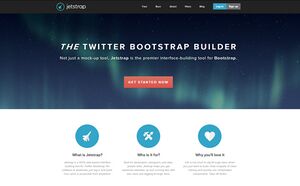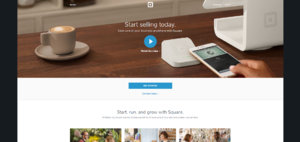Priorities:Texas A&M University Student Priorities: Part III
Overview
While Texas A&M University boasts a vast sum of resources in order to facilitate entrepreneurship, its de facto accessibility is lackluster due to the sparse nature of all of the manifestations of the resources. While it may initially seem positive that we have so many different facilities and programs, it leads to confusion, especially for undergraduate students, and creates an inhibitory effect on students who wish to venture into I&E. This leads to the stonewalling of many students from taking initiative for an idea they may have, and this produces, in sum, an unrecoverable loss in ideas, the retardation of innovation evangelism, and limits entrepreneurship in general for the student body. It is imperative that the university organizes the programs and resources in a manner that is intuitive, clear, and easily accessible.
This page lists directed strategies to this issue and enumerates possible implementations of solutions for each strategy.
Contents
Strategies
PROJECT H.U.B.
Current structure is too confusing; organize an umbrella head for all I&E initiatives and programs, with main manifestation being a website.
- Website that is clear, concise, and minimalistic.
- A student should be able to enter this website and not be overwhelmed by the structure.
- Material Design Lite or Bootstrap is a feasible standard
- Short and easy URL (tamuie.com, ie.tamu.edu, etc)
- The website should be a portal that any student can use to find out more about I&E at TAMU.
- Can be categorized by specific perks and benefits of each program to match an individual student's needs
- Plan
- Meet with Rodney Boehm, director of EIC, to discuss how to implement the umbrella structure
- Meet with directors of different I&E programs and discuss pipelining information to H.U.B.
- Sample student opinions to assess what is specifically unfavorable with current website
- Outline website structure, full stack diagram and flow chart.
- Assemble Team, Develop Website
- Test Pipeline, posting, accessibility, sample experience of website from student user data
- Launch
- Write documentation for future maintenance
- Encourage and facilitate collaboration between different (possibly similar) programs in order to reduce degree of seperation between programs and to encourage a more centralized structure
- Meet with directors of different I&E programs and learn the programs
- Construct a map of possible collaboration initiatives between programs
- Contact the individual directors with collaboration proposal
- Take proposal idea and survey opinions of users who participated in either/both programs
- Solidify proposal, contact intermediary (umbrella head) to mediate the initiative
- Launch the initiative
- Reiterate
PROJECT D.E.M.O.
- Need a way to showcase the separate efforts of the I&E programs across campus
- Need a way to keep track of events of all the different I&E programs into a single calendar
- This is another centralization effort that enables students to enter the hub and become familiarzed and aware of all of the different programs across campus
- Demo Day at the end of the academic year
- This is to showcase all of the events by selecting highlights
- This can expose students or "viewers" to the different programs and the roles they played in developing the projects
- Should decide between presentation style and science fair style
- Aggressive marketing to ensure a large audience of other I&E students and those who are potentially interested
- PLAN:
- Discuss with stakeholders, I&E student leaders, and industry partners to broadly construct the outline of the event-- namely science-fair or presentation-pitch style
- Contact the different I&E programs to highlight their most successful venture to be part of the demo
- Organize and plan the demo
- Coordinate with I&E directors
- Aggressively market to students who are both in and not in I&E
- Finalize structure, confirm attendance and participation of the highlight projects
- Launch
- Survey results of all those who were involved, including attendees, sponsors, directors, and demo-ers
2. Central calendar for all I&E related events
-
Events like this are easier to organize if there is a single timeline
- Front end visualization framework backed by a google calendar that is easily modifiable by representatives of different I&E programs
- Make part of H.U.B. Plan
- Coordinate with directors of I&E programs about the idea
- Create a framework or bot that helps to automate the scheduling
- Re-coordinate with directors to instruct on scheduling
- Update H.U.B. to reflect the schedule on the backend
- Advertise H.U.B. and calendar
PROJECT O.U.T.R.E.A.C.H.
Proactive Outreach: Go to the students, instead of waiting for the students to come to us. Outreach proactive search for student opinion and feedback as well. The students are our customers and we need to engage with them and vice versa, as well as providing an environment for them to connect amongst themselves.
- I&E Community
- Environment for students to engage with others who are also passionate about I&E
- Rapport support amongst students for I&E initiatives
- Fosters networking, interpersonal learning, and increased engagement and interaction
- PLAN:
- Survey students to see if I&E community is something they would actually be engaged with
- Proceed with recruiting said students to be early adopters of the I&E space
- Choose a dedicated location for the space
- Organize forum leaders to spearhead discussions and dynamics in the room
- Encourage leaders to head knowledge sharing session
- Encourage referall of other students
2. Increase proactive engagement with students to asess and address contemporary complaints/feedback
- Cannot continue to proceed in a "directionless" pursuit of I&E at the university
- The core of any such efforts should revolve around our students and their interests
- To gauge these, we should have an open line of communication at all times
- PLAN:
- Survery students within I&E community
- Survey students outside of I&E community
- Construct an open-line for feedback/complaints of I&E related activities
- Feed data into a sum and analyze
- Discuss inherent issues of sum and construct plans or plan edits
- Iterate
PROJECT C.O.A.C.H.
- There exists academic advisors to help students navigate through courses and major; why not one for I&E?
- I&E advisors should help passionate students who don't know where to start to find their place and program in the I&E ecosystem
- I&E coaches should help students who don't necessarily know which direction to take for their idea
- Have an I&E advisor who is familiar with our ecosystem
- I&E Advisor can be a student or faculty member dedicated to helping those who have just dipped their toes into I&E
- PLAN:
- Create portfolio of different I&E organizations/programs to be easily read and understood
- Select a member in the community, faculty or student, dedicated to using this portfolio to help students
- Certify this individual
- Have this individual's profile and contact be put on the main I&E hub
- Talk to other I&E programs and have their information streamlined to the advisor
2. Have an I&E Coach who helps students with the direction of their product
- Coaches should not only be familiar with the startup process and idea transformation, but should be trained and involved with several different I&E programs on campus in order to have the best knowledge base for students
- PLAN:
- Identify a member of the local I&E community who is experienced with a good number of the programs
- Else, default to Startup Aggieland
- Connect this individual to students and vice versa by expanding and advertising profile on I&E hub
- Monitor student feedback and asessment of individual to help coach learn to be more helpful
- Let other I&E programs know about coach's role as to easily streamline request for information to ensure that there is no bottleneck for the student entrepreneur
Related Links
Texas A&M Student Priorities Part I
Texas A & M Student Priorities Part II

